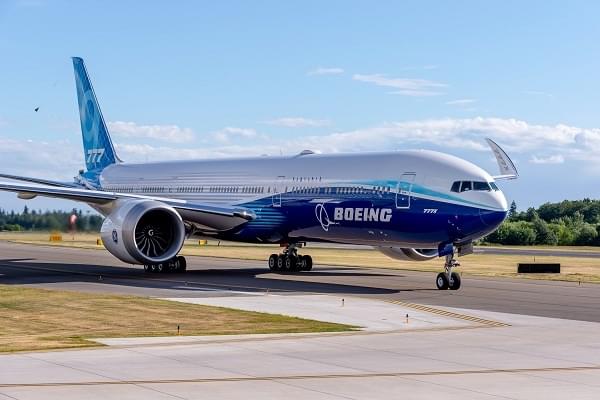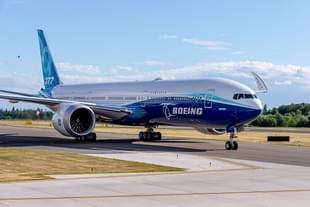News Brief
First 737 MAX Now 777X: As Boeing’s Woes Continue, Here’s Why It Should Look At The DC-10 Aircraft For Hope
Hemant Bijapurkar
Sep 09, 2019, 01:56 PM | Updated 01:56 PM IST
Save & read from anywhere!
Bookmark stories for easy access on any device or the Swarajya app.


2019 has been an year to forget for Boeing.
Big Trouble
The aviation manufacturing giant has been in the news since March for all the wrong reasons over its new fuel efficient short to mid haul aircraft Boeing 737 MAX aircraft following disastrous high profile crashes involving Ethiopian Airlines flight 302, which killed all 157 on board.
The crash had chilling similarities to Indonesian Lion Air flight 610 which crashed into the Java sea killing all 189 on board back in October 2018.
The common denominator the Boeing 737 MAX predictably earned bad press and its units were grounded across the world after various reports of design deficiencies including a faulty Angle of Attack (AoA) sensor which signalled an impending stall to the MCAS system, when there was no risk of stalling.
There were also allegations of Boeing hiding critical information about this automated flight control feature which jeopardised passenger safety.
Till date around 500 units of 737 MAX remain grounded and the road back to the skies seems long and arduous.
Icing On The Cake Of Troubles
If this wasn’t enough of a headache for the executives at Boeing, the aircraft manufacturer has been forced to suspend a trial on its upcoming long haul 777X aircraft.
The aircraft was reportedly undergoing final load testing when one of its doors blew out. Boeing insists that the aircraft was subject to test conditions which are unlikely during any commercial operations. Earlier issues were detected in its General Electric manufactured twin engines, which led to the postponement of its flight test.
While these setbacks will propel hysteria over doom and gloom for Boeing, it can dive into aviation history to look at the DC-10 aircraft and its subsequent recovery from life threatening debacles.
The Case Of McDonnell Douglas DC-10
Incidentally, this is not the first time an aviation manufacturer has suffered a major setback over a new aviation product. In recent aviation history, one does not need to look further than McDonnell Douglas’s DC-10 to discover the “worst start”.
Aviation manufacturer McDonnell Douglas introduced its then state of the art wide-body trijet DC-10 aircraft in 1971 which promised greater fuel efficiency and low maintenance costs.
Just as the aircraft was undertaking baby flight steps, it was hit with a barrage of accidents which were attributed to a design flaw in the cargo door which blew open mid air in Turkish Airlines Flight 981 and American Airlines Flight 96 in 1972 and 1974 respectively. All 346 on-board Flight 981 died while Flight 96 managed an emergency landing.
It was found that the new outward-opening cargo door design of the DC-10 as opposed to the conventional inward opening one had left it prone to improper locking as it was possible for the door to be shut, without fully engaging the heavy steel hooks designed to keep the door bolted in place.
After the crashes, the US Federal Aviation Administration (FAA) ordered a mandatory cargo door modification, to ensure that the locking pins get fully engaged.
The DC-10 suffered its worst nightmare in 1979 when American Airlines Flight 191 lost control soon after takeoff from Los Angeles and suffered a crash killing all 271 on board. It is the deadliest accident in American aviation history till date.
In the aftermath the FAA took the unprecedented decision to revoke DC-10s type certificate, thus grounding all 138 US registered DC-10s and banning any foreign DC-10 from entering the US airspace.
While critical flaws in the aircraft’s engine design were suspected, the crash was ultimately ruled as a maintenance failure. The flight restrictions were lifted 5 weeks later when modifications were made to slat actuation, position systems, along with changes to stall warning and power supply.
So, Did The World End For DC-10?
No, the aircraft bounced back after its initial setback and continually remedied its poor initial safety record as the design and maintenance procedures were improved over the years.
Come 2008 in a Boeing study [PDF] it was noted that the DC-10’s lifetime safety record was comparable to other second generation jet aircraft. Biman Bangladesh continued using a DC-10 for passenger services till 2014. It is still being used by various carriers for cargo services.
Final Thoughts
While the scenarios are not exactly identical for DC-10 and 737 MAX as the latter has been grounded for a lot longer and needs to battle unprecedented scrutiny in the advent of the digital age. But the DC-10 episode does drive home the point that an aircraft can recover from major setbacks to ultimately register an impressive flying life.
Hemant is a Senior Sub-Editor at Swarajya





